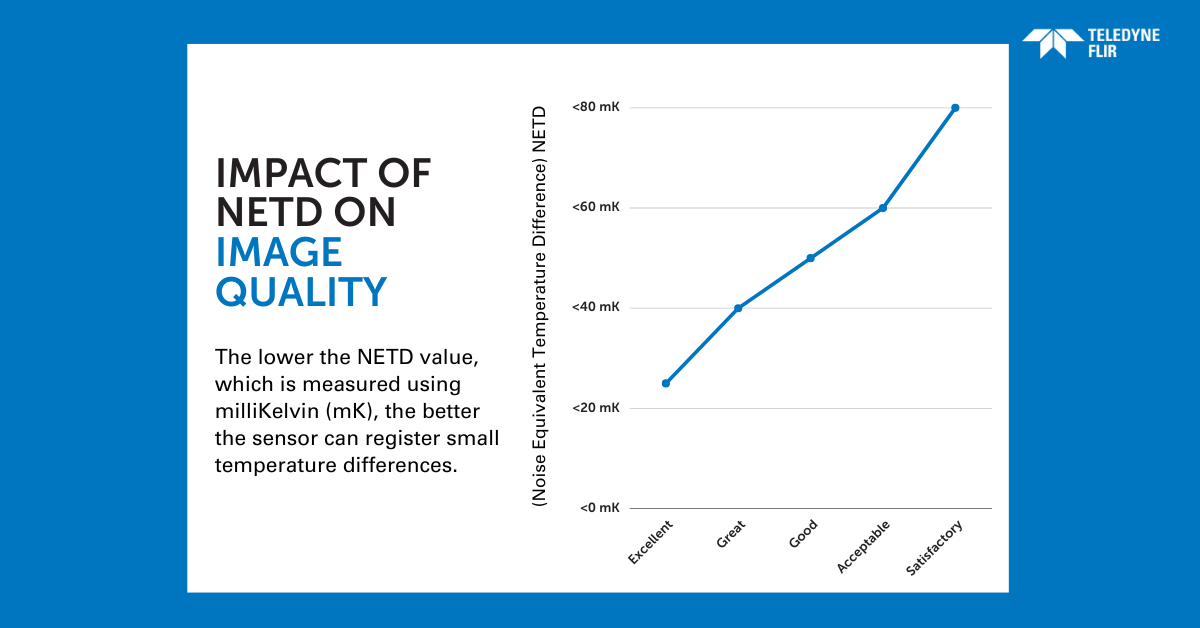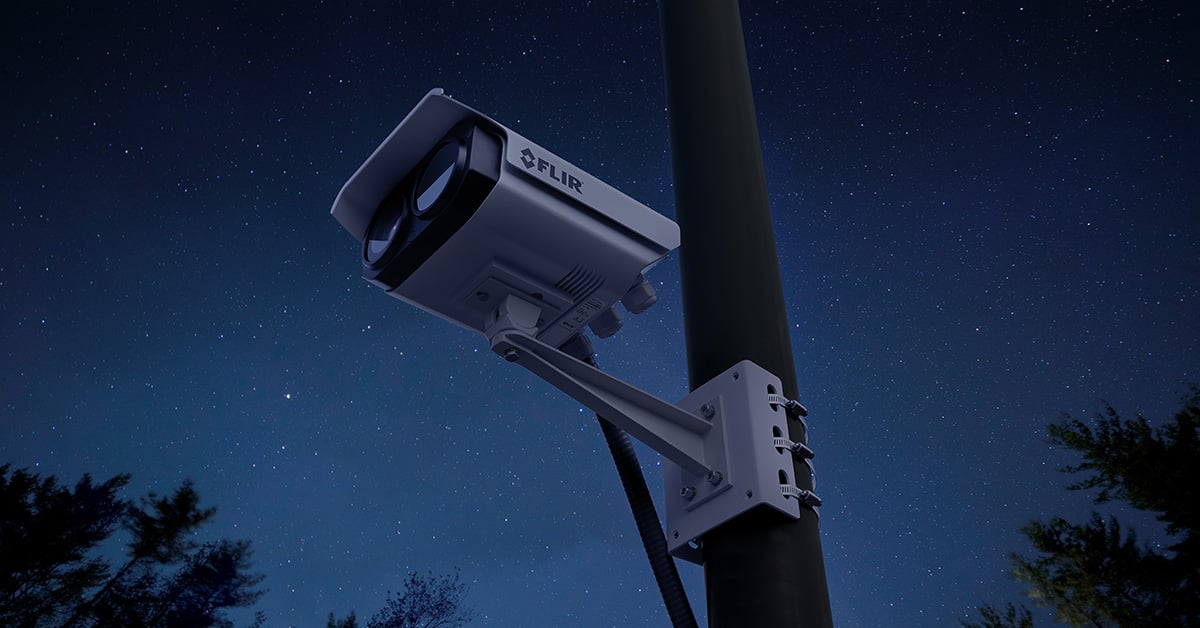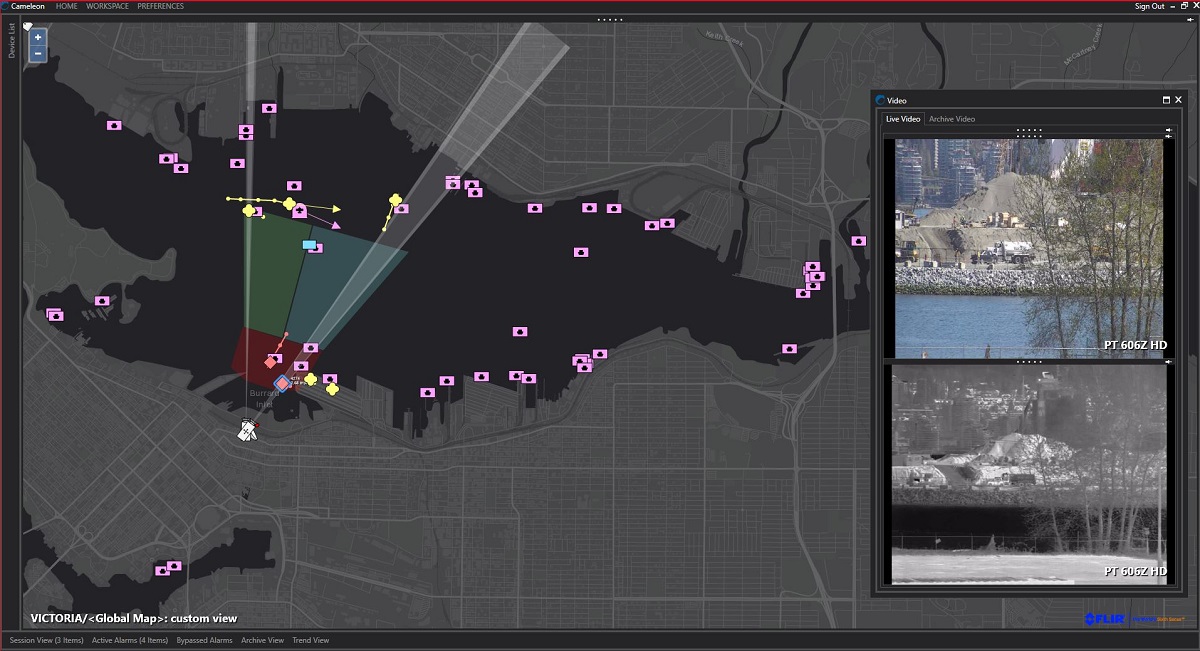The Importance of Thermal Sensitivity (NETD) for Detection Accuracy
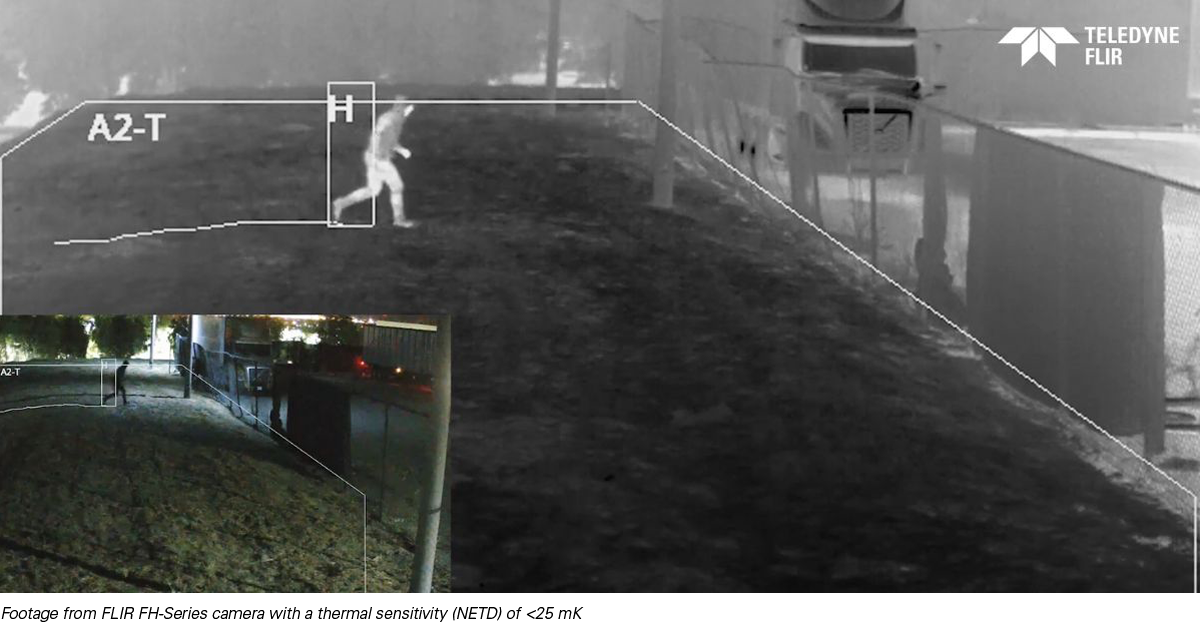
Choosing the Right Thermal Security Camera: The Role of Thermal Sensitivity (NETD)
As users continue to expand and evolve their security systems, the adaptation of thermal cameras to improve their overall situational awareness at the perimeter has been a growing trend. Because more visible camera manufacturers are introducing thermal offerings, it is important to understand what differentiates an entry level camera from a higher performing one. Those familiar with visible cameras understand that resolution and available pixels determine how well analytics will work for the necessary application. While resolution is important with thermal cameras, you also want to know what the NETD is and how this impacts the performance of the camera. In this tech note, you will learn how a thermal camera’s NETD will affect its image quality and the performance with analytics.
Defining Thermal Sensitivity (NETD)
Thermal sensitivity is another way of referring to Noise Equivalent Temperature Difference (NETD), which is the smallest temperature difference you can see when using a thermal device. This value is often measured in milliKelvin (mK). Essentially, it serves as an electronic noise rating for the system.
Ideally, you would want your thermal camera to have the lowest mK as possible. The lower the NETD, the better the sensor can register small temperature differences. By having a higher NETD we lose clarity in the image which would impact the performance of analytics and the ability to see in difficult weather.
There are other variables that can help ensure you capture as many scene details as possible, including the f-stop number, but for the purposes of this piece we will focus on NETD.
The Importance of Thermal Sensitivity (NETD)
Impact of Thermal Sensitivity (NETD) on image clarity
When considering a thermal security camera and looking at its NETD value, you may notice a relationship between a camera's ability to register small temperature differences (low NETD) and the system price. In general, you can use the below scale to determine the quality of a thermal detector:
- <25mK (Excellent)
- <40mK (Great)
- <50mK (Good)
- <60mK (Acceptable)
- <80mK (Satisfactory)
A thermal camera creates an image by assigning a shade of gray to each temperature change in the field of view. Since the lower mK can see smaller changes in temperature, the image will produce more shades of gray which ultimately provides better clarity. This will generate better performance during inclement weather conditions, along with better detection and classification when paired with analytics. Conversely, a camera with a <60 mK, while acceptable, will produce a grainer image, have a lower detection range and most likely trigger more nuisance alarms with analytics.
As an additional benefit, lower NETD cameras can detect changes in temperature more quickly and with greater accuracy, leading to increased efficiency in identifying potential problems and managing resources.
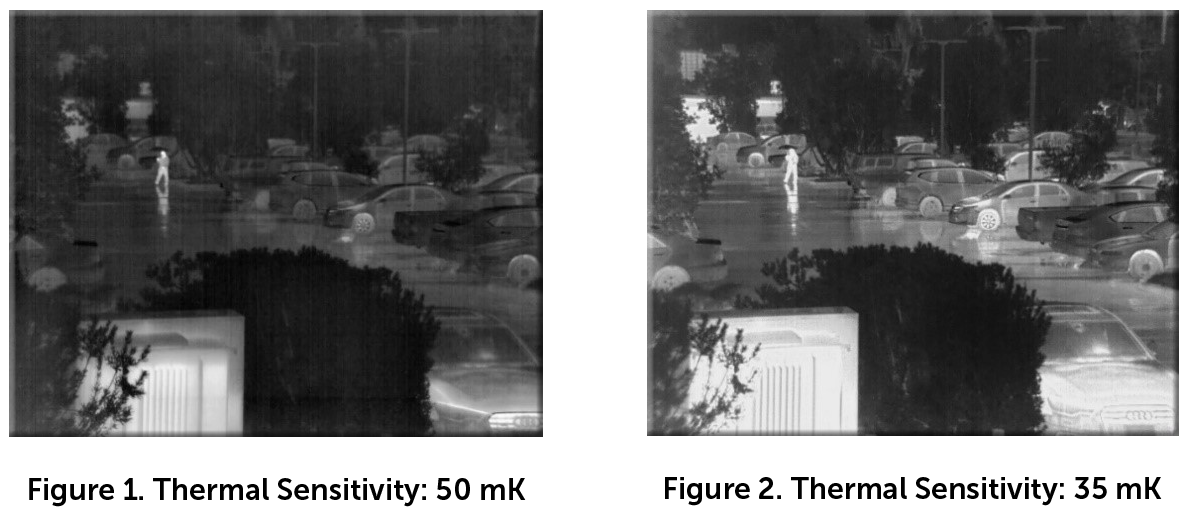
The above examples are images both captured with the ambient temperature being ~55°F and when raining. Figure 2, the camera with a NETD of <35 mK provides a much crisper image with sharper scene details.
Resolution vs. NETD
So, what does this mean for you as you research the right thermal security camera for your application? It's common for companies to boast that their security system offers 640 × 480 thermal resolution while listing models that vary widely in price, sometimes by several thousands of dollars. Why? Typically, what companies aren't telling you about the lower cost 640 × 480 cameras is their NETD value: their detectors offer less sensitivity (with a high NETD) and lower performance than more expensive models.
A thermal camera with a <25 mK is going to be able to distinguish between very small temperature differences in the field of view when compared to a camera with a <60 mK. If both cameras have a 640x480 resolution, then they both have 307,200 available pixels to create an image, but the camera with the <25 mK will produce a significantly crisper image compared to the <60 mK.
How Thermal Sensitivity (NETD) Enhances Security System Performance
For security applications, thermal cameras are usually paired with some sort of analytic. Most manufacturers provide an onboard solution, but some customers elect to use a server-based option. Regardless of edge or server based, most analytics will be either motion or neural network-based platforms. Both platforms have strengths and weaknesses, but when choosing the right thermal camera, it is important to understand how thermal sensitivity will impact the performance of the analytics.
Role of Thermal Sensitivity (NETD) in Motion-Based Analytics
In general, motion based analytic platforms provide object classification that is initiated off motion. With this system the analytics must be calibrated to the camera field of view to determine target sizes in the foreground and background. When the camera sees motion, it then works to classify the object moving based on target size and pixel change. The camera will usually generate an alarm if the object in motion is classified as the desired target and breaks the defined rules set.
With a motion-based analytic, camera resolution is most important for the initial detection. By having more pixels available, the camera can detect and classify objects at farther distances. However, having a lower NETD will provide a more stable performance of the camera and analytic, even in inclement weather conditions. For example, a <30 mK will maintain a more stable image during rain than a <50 mK camera with the same resolution (you can refer to Figures 1 and 2 above). This will allow for more accurate and consistent performance.
Role of Thermal Sensitivity (NETD) in Neural Network Based Analytics
Analytic platforms based on neural networks can be closely compared to the way a human brain works. It uses neural networking algorithms to recognize, classify and locate objects in a single image. Neural networks are trained by a deep learning process and require a huge dataset but also a specific processor capable of running the analytics. so instead of classifying an object based on pixel change and movement, they are analyzing the image using a model that was trained on hundreds of thousands of samples to produce a more accurate classification, resulting in a lower rate of nuisance alarms.
When looking for the right thermal camera to use with a neural network based analytic, your best option would be one with the lowest mK. Especially when image analysis is being done at the software level, details and clarity will be important for optimal performance. The lower mK will not only help maintain optimal performance through inclement weather, but it will help reduce nuisance alarms.
A Comparison of FLIR Thermal Security Cameras from Good to Best: FB-Series, PT-Series, FH-Series Sensitivity Ratings
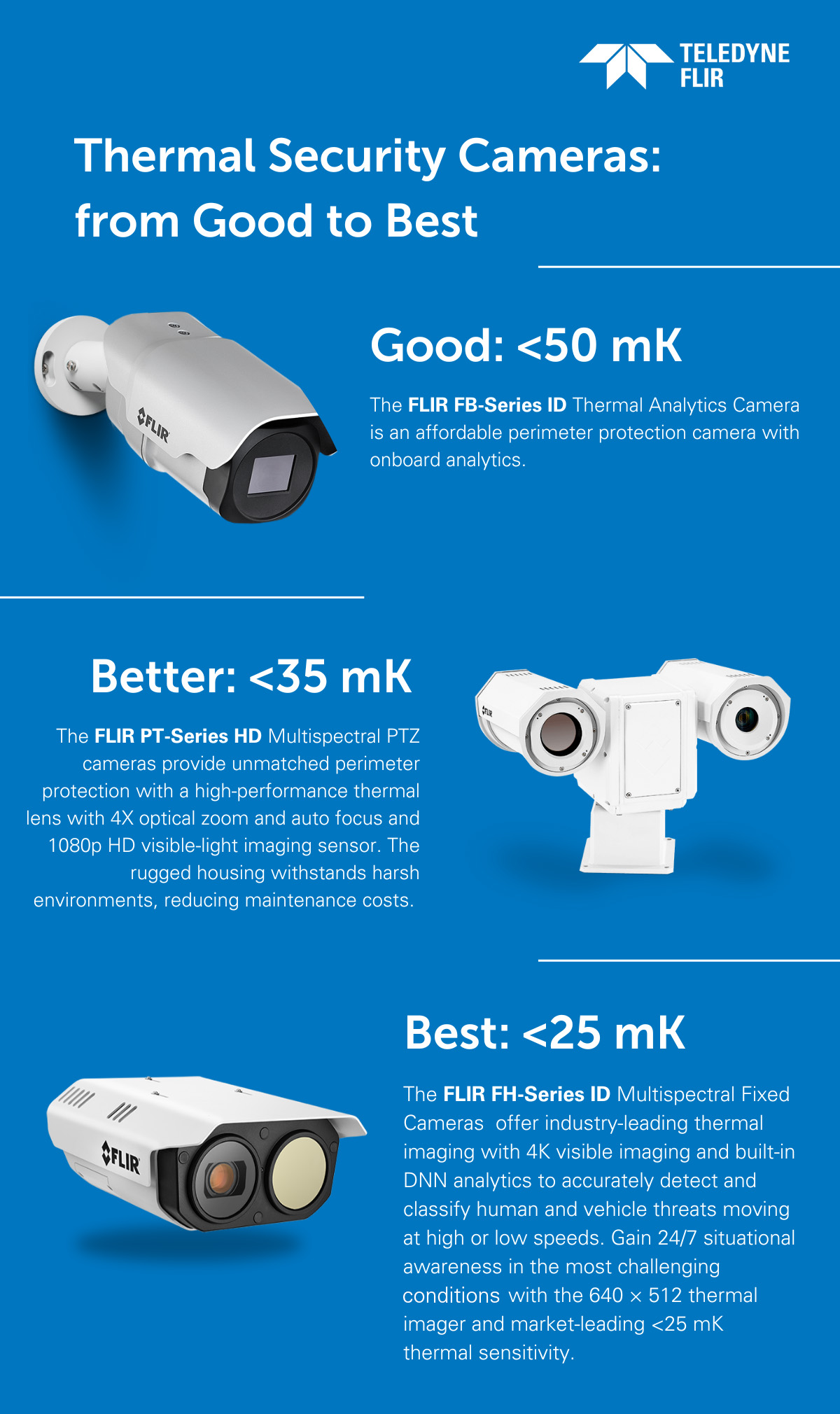
Key Takeaways
Chances are if you are considering a thermal security camera, then you're looking for features a visible camera simply cannot provide. If you are going to make the investment, do not sell yourself short by purchasing a product that isn’t going to provide higher accuracy, better image quality, improved object recognition and increased efficiency, even in the toughest weather conditions. Thermal cameras coupled with analytics help provide a virtual barrier to all types of perimeters. If you are making the investment into the technology, make sure you are purchasing a camera that will provide results in snow, rain, fog, and darkness; and not just clear sunny days.
